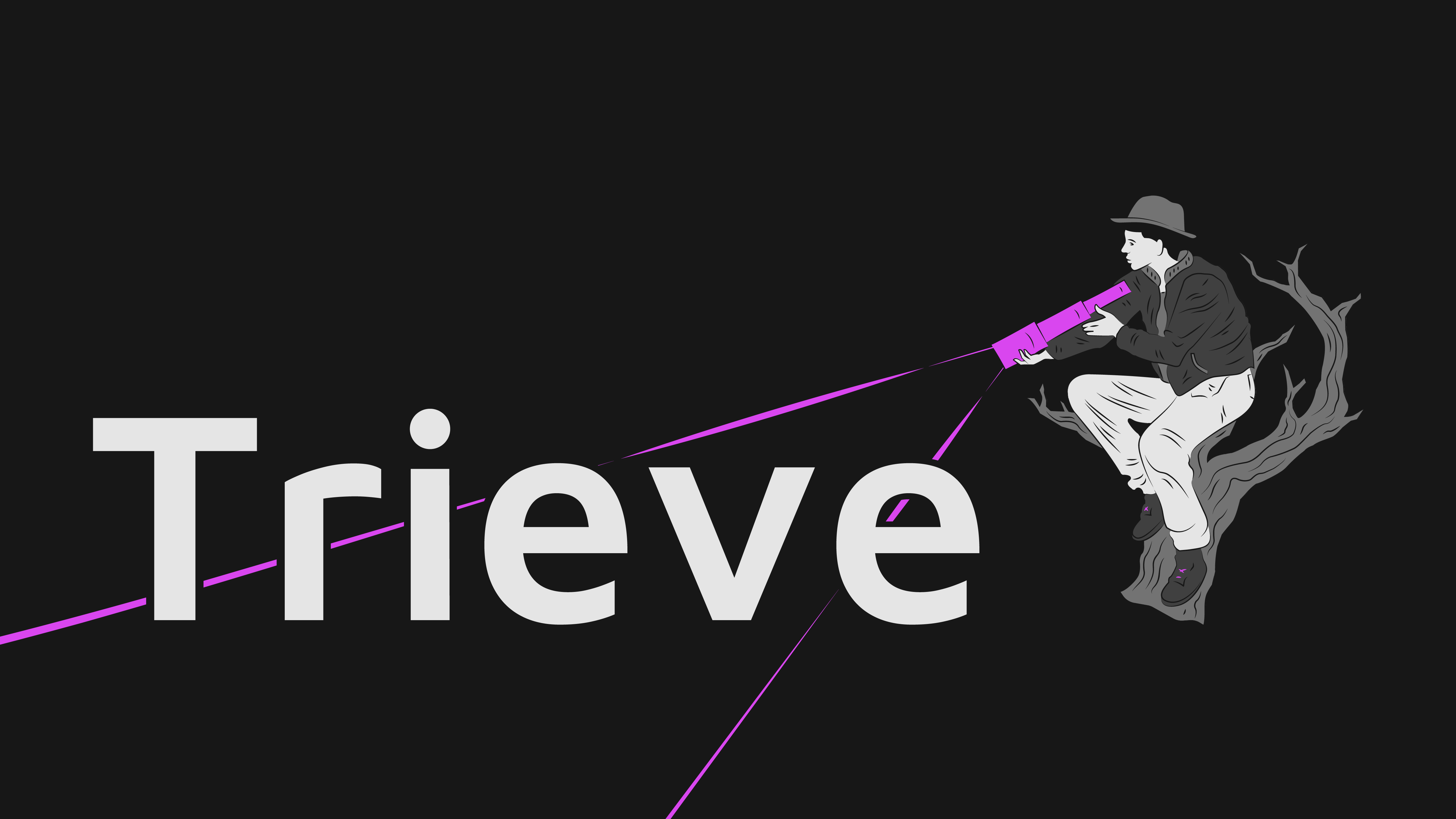Sign Up (1k chunks free) | Documentation | Meeting Link | +1 628-222-4090 | Community Matrix
- 🔒 Self-Hosting in your VPC or on-prem: Buy a license to host in your company's VPC on prem with our ready-to-go docker containers and terraform templates.
- 🧠 Semantic Dense Vector Search: Integrates with OpenAI or Jina embedding models and Qdrant to provide semantic vector search.
- 🔍 Typo Tolerant Full-Text/Neural Search: Every uploaded chunk is vector'ized with naver/efficient-splade-VI-BT-large-query for typo tolerant, quality neural sparse-vector search.
- 🖊️ Sub-Sentence Highlighting: Highlight the matching words or sentences within a chunk and bold them on search to enhance UX for your users. Shout out to the simsearch crate!
- 🌟 Recommendations: Find similar chunks (or files if using grouping) with the recommendation API. Very helpful if you have a platform where users favorite, bookmark, or upvote content.
- 🤖 Convenient RAG API Routes: We integrate with OpenRouter to provide you with access to any LLM you would like for RAG. Try our routes for fully-managed RAG with topic-based memory management or select your own context RAG.
- 💼 Bring Your Own Models: If you'd like, you can bring your own text-embedding, SPLADE, cross-encoder re-ranking, and/or large-language model (LLM) and plug it into our infrastructure.
- 🔄 Hybrid Search with cross-encoder re-ranking: For the best results, use hybrid search with BAAI/bge-reranker-large re-rank optimization.
- 📆 Recency Biasing: Easily bias search results for what was most recent to prevent staleness
- 🛠️ Tunable Popularity-Based Ranking (Merchandizing): Weight indexed documents by popularity, total sales, or any other arbitrary metric for tunable relevancy
- 🕳️ Filtering: Date-range, substring match, tag, numeric, and other filter types are supported.
- 🧐 Duplicate Detection: Check out our docs on collision-based dup detection to learn about how we handle duplicates. This is a setting you can turn on or off.
- 👥 Grouping: Mark multiple chunks as being part of the same file and search on the file-level such that the same top-level result never appears twice
Are we missing a feature that your use case would need? - call us at 628-222-4090, make a Github issue, or join the Matrix community and tell us! We are a small company who is still very hands-on and eager to build what you need; professional services are available.
Our current top 2 priorities for the next while are as follows. Subject to change as current or potential customers ask for things.
- Observability and metrics (likely something w/ Clickhouse)
- Benchmarking (going to aim for a 1M, 10M, and 100M vector benchmark)
- SDKs (can generate from OpenAPI spec, but would like to test a bit more)
- Find an issue in the issues tab that you would like to work on.
- Fork the repository and clone it to your local machine
- Create a new branch with a descriptive name: git checkout -b your-branch-name
- Solve the issue by adding or removing code on your forked branch.
- Test your changes locally to ensure that they do not break anything
- Commit your changes with a descriptive commit message: git commit -m "Add descriptive commit message here"
- Push your changes to your forked repository: git push origin your-branch-name
- Open a pull request to the main repository and describe your changes in the PR description
We have a full self-hosting guide available on our documentation page here.
sudo apt install curl \
gcc \
g++ \
make \
pkg-config \
python3 \
python3-pip \
libpq-dev \
libssl-dev \
openssl
You can install NVM using its install script.
curl -o- https://raw.githubusercontent.com/nvm-sh/nvm/v0.39.5/install.sh | bash
You should restart the terminal to update bash profile with NVM. Then, you can install NodeJS LTS release and Yarn.
nvm install --lts
npm install -g yarn
mkdir server/tmp
cargo install cargo-watch
cp .env.chat ./chat/.env
cp .env.search ./search/.env
cp .env.server ./server/.env
Here is a guide for acquiring that.
- Open the
./server/.envfile - Replace the value for
LLM_API_KEYto be your own OpenAI API key. - Replace the value for
OPENAI_API_KEYto be your own OpenAI API key.
cat .env.chat .env.search .env.server .env.docker-compose > .env
./convenience.sh -l
# or
COMPOSE_PROFILE=dev docker compose up
We know this is bad. Currently, We recommend managing this through tmux or VSCode terminal tabs.
cd server
cargo watch -x run
cd search
yarn
yarn dev
cd chat
yarn
yarn dev
You can download the latest version NodeJS from here. Open the downloaded file and follow the steps from the installer.
After completing the installation, open a powershell with administrator permissions.
npm install -g yarn
After installation, yarn might throw an error when used due to Window's execution policy. Change the execution policy to allow scripts to be executed by applications that are signed by a trusted publisher by putting this command in an admin powershell.
Set-ExecutionPolicy -ExecutionPolicy RemoteSigned
You can download the latest version of Rust from here. Follow the installer's directions and install the prerequisites.
After installation, open a new powershell window with administrator permissions.
cargo install cargo-watch
Follow the instructions to download Docker Desktop for Windows from here. You may need to follow the instructions to enable WSL 2.
Download PostgreSQL 13 from here. You should not use any other version of PostgreSQL due to there being an issue with diesel on other versions.
When installing, ensure that the PostgreSQL server is set to a port other than 5432 to prevent it from interfering with the docker container.
Add Postgres to PATH
[Environment]::SetEnvironmentVariable("PATH", $Env:PATH + ";C:\Program Files\PostgreSQL\13\lib;C:\Program Files\PostgreSQL\13\bin", [EnvironmentVariableTarget]::Machine)
cp .env.chat ./chat/.env
cp .env.search ./search/.env
cp .env.server ./server/.env
Here is a guide for acquiring that.
- Open the
./server/.envfile - Replace the value for
LLM_API_KEYto be your own OpenAI API key. - Replace the value for
OPENAI_API_KEYto be your own OpenAI API key.
Start the docker containers using the batch script.
Get-Content .env.chat, .env.search, .env.server, .env.docker-compose | Set-Content .env
./convenience.bat l
You need 3 different windows of powershell or use something like VSCode terminal tabs to manage it.
cd server
cargo watch -x run
cd search
yarn
yarn dev
cd chat
yarn
yarn dev
apt install libjpeg-dev libpng-dev libtiff-dev
curl https://imagemagick.org/archive/ImageMagick.tar.gz | tar xz
cd ImageMagick
./configure
make uninstall
make install
diesel::debug_query(&query).to_string();
Install Stripe CLI.
stripe loginstripe listen --forward-to localhost:8090/api/stripe/webhookstripe plans create --amount=1200 --currency=usd --interval=month --product=prod_PCHehsNBCcVN9i
Ensure that the values.yaml contains the value
environment: localInstall docker-ce on your system. Use the following link to find the instructions:
https://docs.docker.com/engine/install/
Install kubectl on your system. Use the following link to get the binary:
https://kubernetes.io/releases/download/
Install virtualbox on your system. Downloads are accessible via the page below:
https://www.virtualbox.org/wiki/Downloads
Install minikube using the following resource:
https://minikube.sigs.k8s.io/docs/start/
Use the command:
minikube config set driver virtualboxNow you can deploy a local kubernetes cluster to minikube:
minikube start --disk-size=50gDeploy the registry addon using the include scripts
cd trieve
bash minikube/enable-registry.shRun the included script to launch socat to port forward the registry
cd trieve
bash minikube/launch-socat.shNow you can build the entire set of images in the project and deploy them to the local registry at localhost:5000
cd trieve
bash scripts/docker-build.shThis may take a bit, but after the first build it becomes very quick to iterate on the docker images.
Once you have the docker images, you can now deploy the helm chart:
cd trieve/
helm install -f values.yaml trieve .This deploys everything.
To make API calls to trieve/server, you can expose it as such:
minikube addons enable ingress
kubectl expose deployment server --type=NodePort --port=8080Get the URL endpoint with:
minikube service server --urlGet the AWS CLI tool using the instructions here:
https://docs.aws.amazon.com/cli/latest/userguide/getting-started-install.html
Ensure you have a kubectl binary. Instructions to install are here:
https://docs.aws.amazon.com/eks/latest/userguide/install-kubectl.html
Get a helm binary. Instructions to install are here:
https://docs.aws.amazon.com/eks/latest/userguide/helm.html
Run the command:
aws configureEnter your account ID and region. Then, run the following command:
Get a eksctl binary using these instructions:
https://docs.aws.amazon.com/eks/latest/userguide/getting-started-eksctl.html
Do this first:
cd aws/elb
bash create-policy.sh
bash create-iamserviceaccount.sh
cd ../../
helm repo add eks https://aws.github.io/eks-charts
helm repo update eks
cd aws/elb
bash install-chart.shConfigure trieve/aws/eks/cluster.yaml to your needs, then ensure that you rename any references to the name included in the source tree for the cluster (it may be trieve-10 for example) to anything that is not taken. We can assume we are renaming trieve-10 to trieve for the relevant files. You can call the script to do this as so:
cd trieve/aws/eks
bash rename-cluster.sh trieve-10 trieveThen you can create the cluster:
cd trieve/aws/eks
eksctl create-cluster -f cluster.yamlThis may take a while. Once finished, you can target this deployment with kubectl:
aws eks update-kubeconfig --name trieveTo actually deploy the chart to AWS, first you must do the necessary set up to ensure gp2 volume provisioning from EBS will work for the filesystem deployments.
The following commands only have to be run on an AWS account once. After these commands run you can destroy the cluster and make a new one but do not need to re-run them:
cd trieve/aws/eks
bash create-identity-provider.sh
cd ..
bash make-service-account.sh
bash make-trust-policy-file.sh
bash create-role.sh
bash attach-role.sh
bash annotate-service-account.sh
cd eksAfter this set-up is complete, for any cluster you create you can run the command:
cd trieve/aws/eks
bash create-identity-provider.sh
bash add-driver.shConfigure values.yaml and, assuming you want a mainnet deployment and are using us-east-2 for example, use the values:
environment: aws
accountId: <aws-account-id>
region: us-east-2Now you can deploy the chart:
cd trieve/
helm install -f values.yaml trieve .Now check your deployment!
kubectl describe podsUse the steps in the above section to configure your AWS CLI tool, and ensure you have docker installed.
Run the script:
cd aws/dkr
bash login-docker.shBump versions, if necessary, of any docker images that have been updated in values.yaml, specifically the tag property of each docker image referenced in the yaml file. The publish script included with trieve will attempt to build and publish every docker image used in the deployments using the tag from this yaml file (parsed with shyaml).
Now you can publish the images:
bash scripts/docker-build-eks.shNow you can upgrade the chart with the new images:
helm upgrade -f values.yaml trieve .




